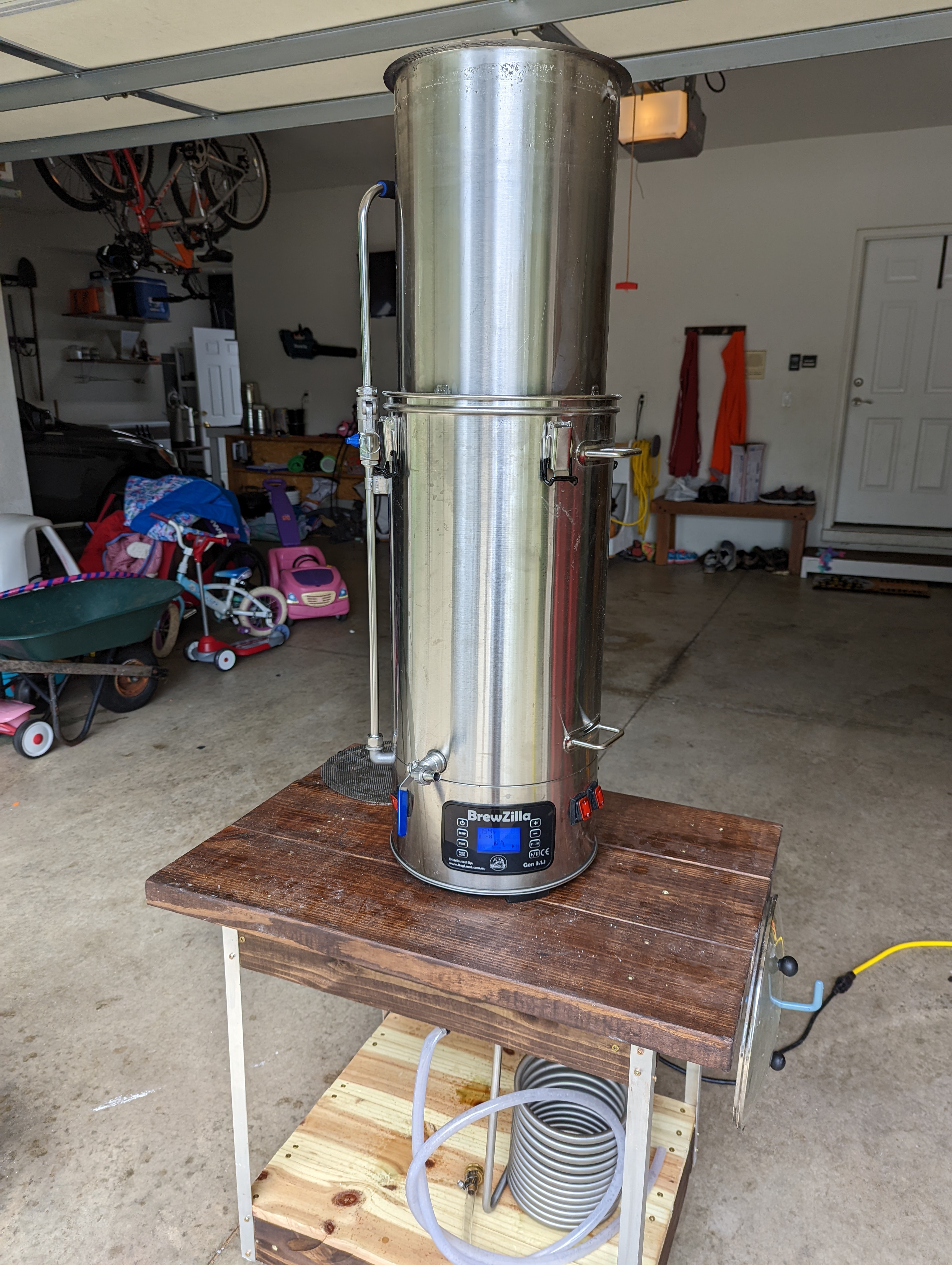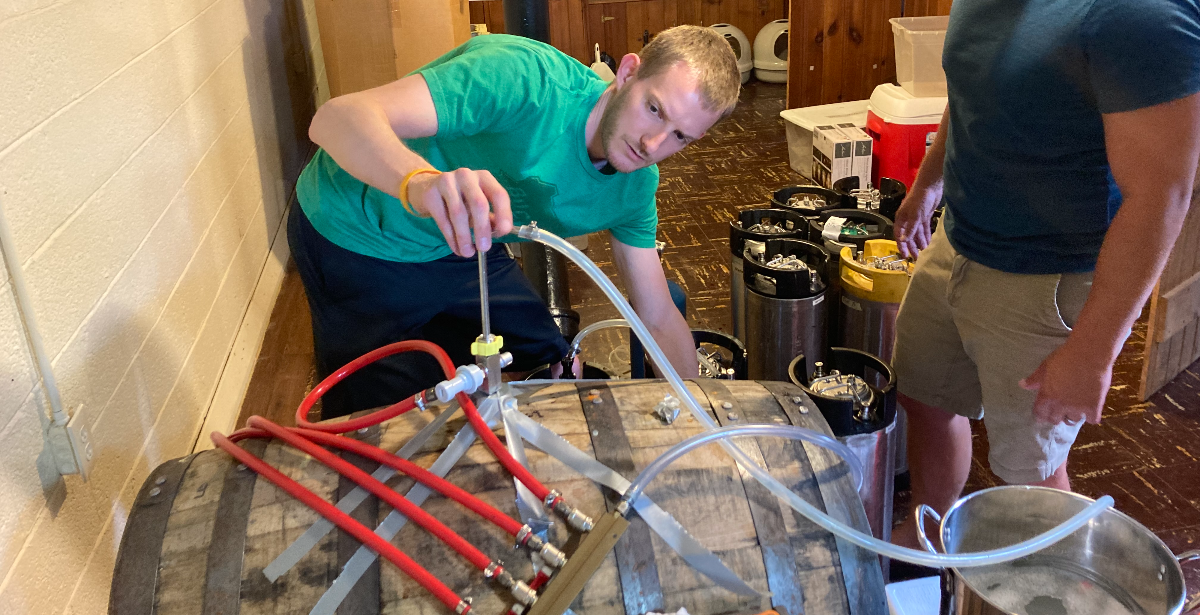In 1994, graduate students in the U of I Department of Food Science and Nutrition had an interest in zymurgy, the chemistry of fermentation with yeasts and in the science of beer and winemaking; the students started a campus homebrewing club with a faculty advisor who taught a course on fermented beverages. Ever since, the Boneyard Union of Zymurgical Zealots has been brewing small scale beer for personal consumption in C-U.
Making beer in someone’s garage sounded unusual to me, but for a group of about thirty individuals in Champaign-Urbana, it’s a treasured hobby. C-U’s Boneyard Union of Zymurgical Zealots (BUZZ) Homebrew Club meets regularly to share tips and tricks about homebrewing and to sample unique drinks made by members. The BUZZ Homebrew Club makes beer, cider, mead, and wine, and the group welcomes anyone who enjoys beer to join the friendly brewers at homebrewing meetups.
No beer made by homebrewers can be sold, so you won’t find these beers on tap anywhere but the garages, basements, and backyards of the individuals who brewed them. If you want a sip, you can taste the beers (for free!) at the Urbana Market at the Square near the food trucks this Saturday, August 20th — or you can join the club.
I chatted with Kyle Murphy, the cooper and soon-to-be president of the BUZZ Homebrew Club. The C-U homebrewer shared about the club’s adventures to pick up barrels, his favorite kind of beer, what’s brewing now, and the worst beer he’s ever brewed.
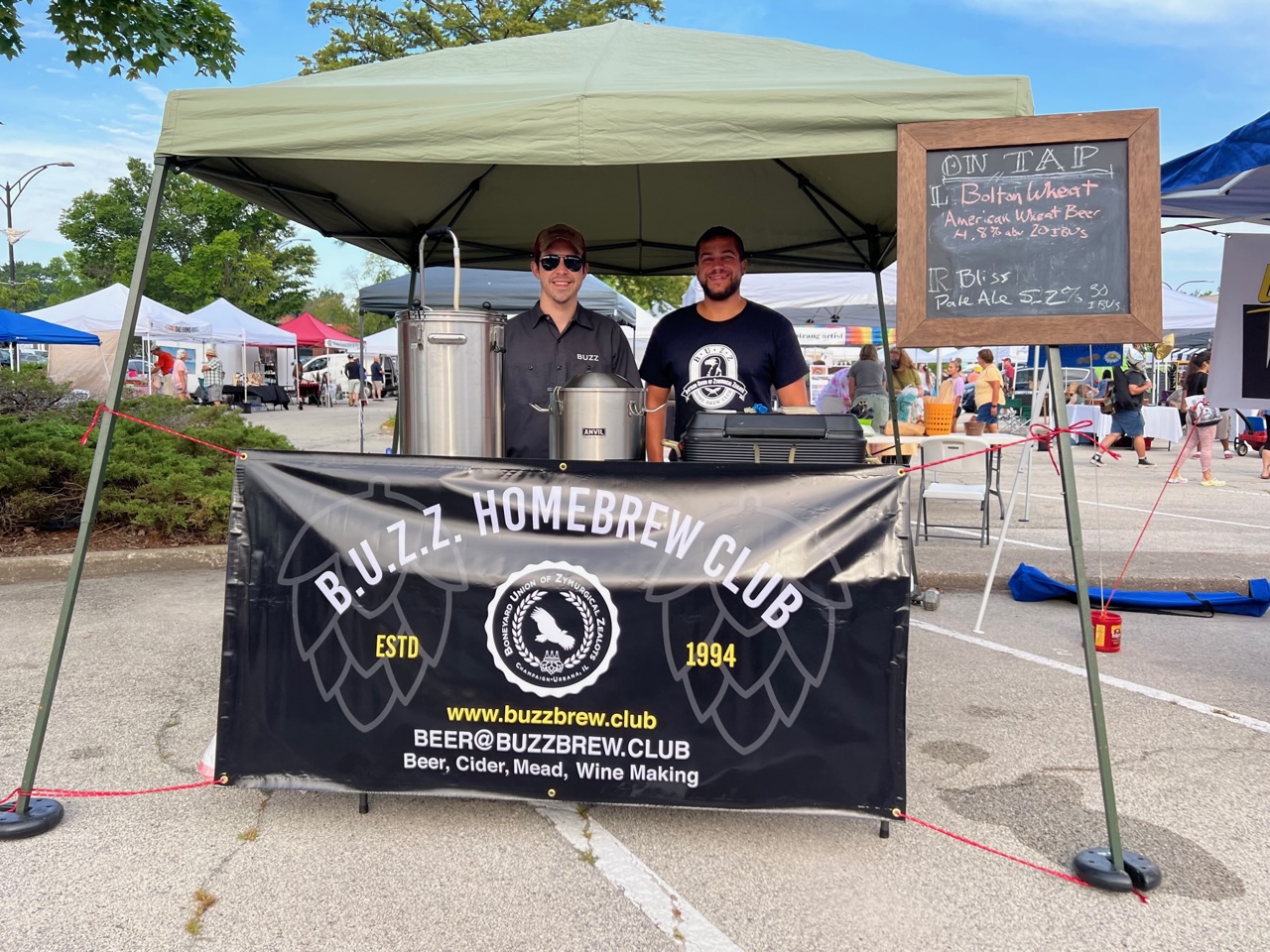
Photo by Alyssa Buckley.
Smile Politely: Can you tell me about your brewing club?
Kyle Murphy: So we are a homebrewing club called Boneyard Union of Zymurgical Zealots Homebrew Club — or BUZZ Homebrew Club for short. We are a club who loves brewing beer, cider, mead, wine, or about anything that ferments. We are mostly made up of people in the C-U area, but we do have some that have moved away and still participate in activities when they can.
SP: What’s your role in the club?
Murphy: Currently, my role is cooper, but in October, I will be the president.
SP: Cool. So when and how did this homebrewing club get started?
Murphy: The club started in 1994 at the U of I, actually. A group of graduate students primarily in the Department of Food Science and Nutrition were the ones who organized it. One of our veteran members, Bill Artz, was appointed to be the club advisor as he was teaching a graduate course on fermented and distilled beverages. Members of the club had to be 21 to join, and it was made up of students, faculty, and local citizens from the area. The university sponsored the club until 2012 when Bill retired; at which point, it went to a private club. The formats for meetings were generally the same as what they are now.
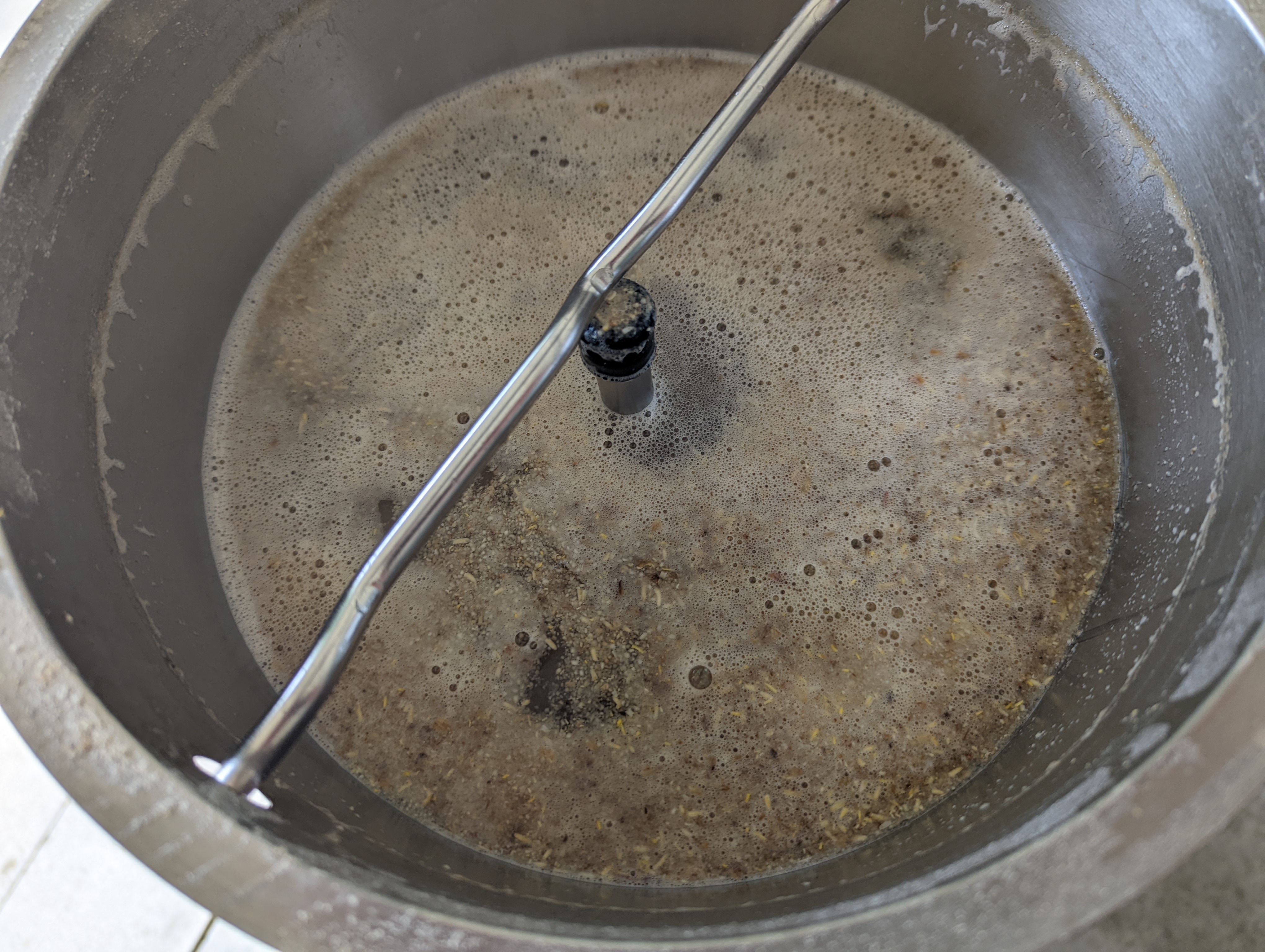
Photo by BUZZ Homebrew Club.
SP: What are you (and the club) brewing right now?
Murphy: Currently, I am brewing a Belgian Tripel and Hefeweizen. I still need to think of a style to bring to the farmers’ market Saturday.
As for the club, we recently racked out an Imperial stout from a bourbon barrel. Back in November, a few of us went to Kentucky and picked up a used bourbon barrel. This one happened to be from Four Roses. Then, ten of us brewed an Imperial stout, and we put it in the barrel. It’s been aging for eight months and has developed some really great flavors. Those who helped brew get five gallons of it back. We will take it to a lab at the U of I to get the ABV tested.
SP: That’s awesome. What is the BUZZ club like?
Murphy: The club is pretty laid back, but there is structure with executive positions. We have a president, vice president, treasurer, secretary, cooper, and other officer positions.
SP: What is a cooper?
Murphy: The cooper is the one who manages the barrel project. They plan out the trip to get a bourbon barrel, as well as manage everyone who wants to participate in filling the barrel with beer. They choose the recipes that everyone brews and just manages that whole project.

Photo by BUZZ Homebrew Club.
We get several uses out of the barrel as well. I think usually about three times is the max amount since after that it really doesn’t impart much more flavor. That and there is always the chance that wild yeast gets in there and sours the beer. Usually, the cooper is the one who keeps the barrel, but I don’t have a place to put it, so the current president is keeping it.
SP: Are there official club meetings?
Murphy: We have formal meetings on the first Thursday of the month at 7 p.m., and during nicer months, we usually just do them at someone’s house. Some of the breweries around town will also host. If someone joins the club, there is no commitment to anything. They can participate as much as they want. It takes $20 a year to officially join, but we welcome anyone who is curious to join a meeting for free to see if they like it and want to be a part of the club.
Usually the meetings consist of new and old club business followed by a round of tasting of homebrew. If someone would like detailed feedback on their brew, then we will do those first. After that, it’s usually more rounds of brew and just meeting with people and having a good time.
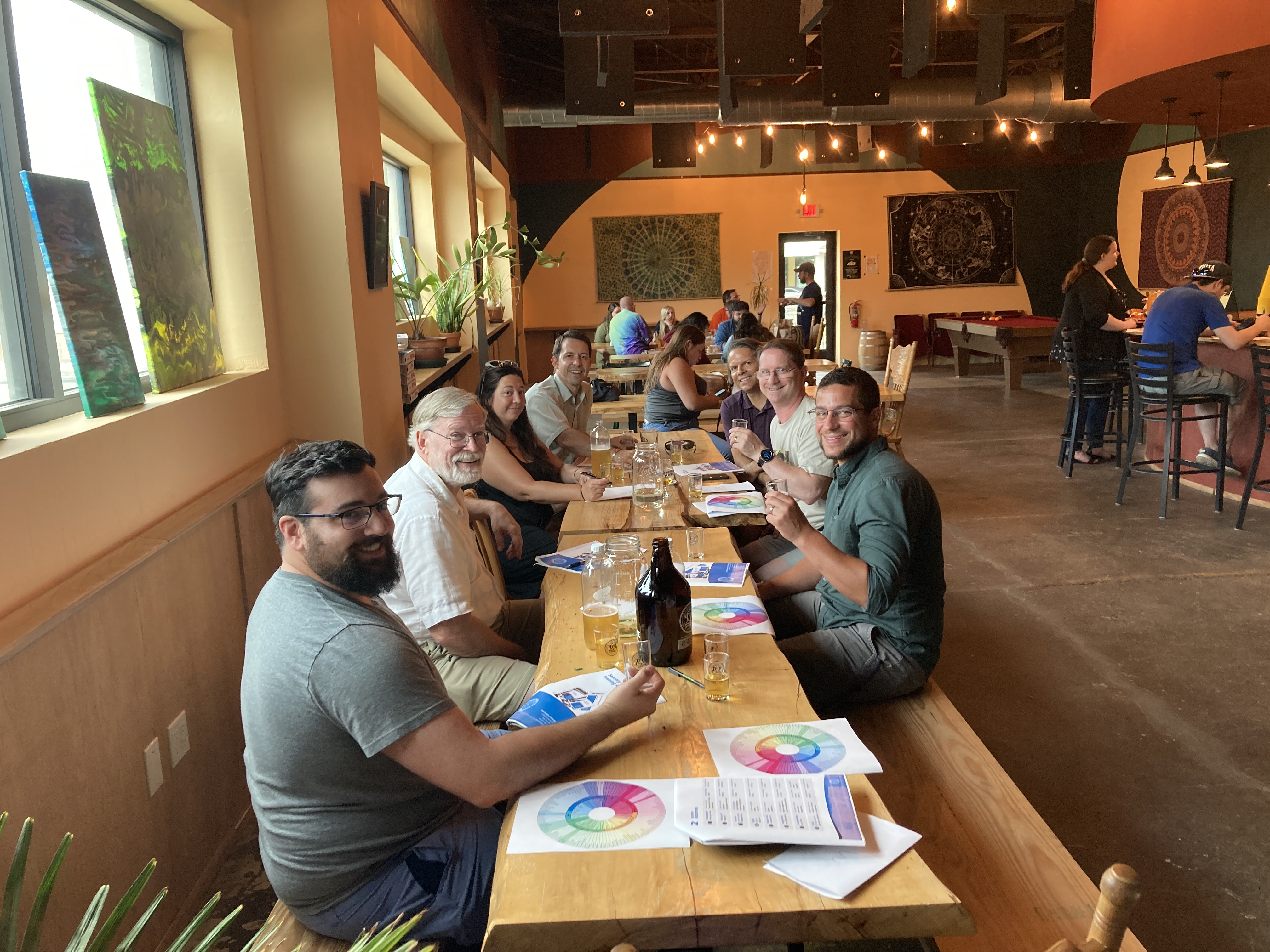
Photo by BUZZ Homebrew Club.
In between meetings, we usually have things going on as well. Many people meet Wednesday nights at 25 O’Clock Brewing for trivia. We went on a tour of Omega Yeast Labs in Chicago this month. One of the members puts together a tasting every three weeks. So we usually meet virtually for the tasting and go through three or four beers of a particular style or two. We will try to follow actual beer tasting competition rules and scoresheets. The end goal for this tasting is to see how many of us can take the exams and become BJCP certified (Beer Judge Certification Program). If we become judges, then we have the chance to be invited to other formal competitions and judge for them.
We do the barrel program as well which is we get about ten members to all brew the same recipe, and then we fill a bourbon barrel. Then [we] just let it sit for however long we want — until it tastes the way we want it. We also have internal competitions, BBQ cookoffs, and [we are] trying to get a nationwide competition going again. For that, we have people and clubs from all over the country send in samples to be judged by BJCP judges and local brewers. We are also trying to be a part of more beer festivals and other events going on around town.
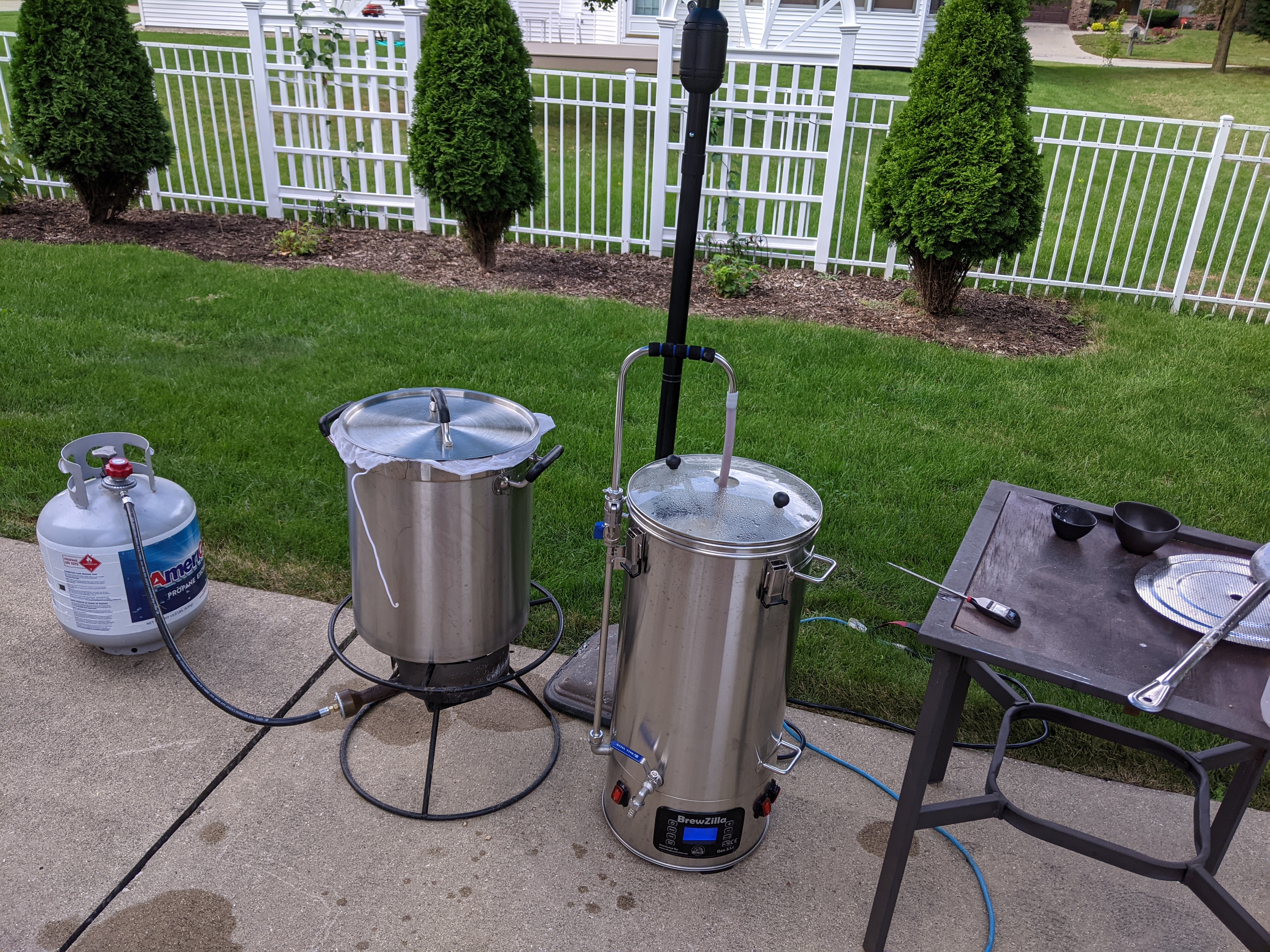
Photo by BUZZ Homebrew Club.
SP: That sounds awesome. How long does beer take to brew?
Murphy: So, it really depends on the style you are going for along with what yeast is used. Most beer with a traditional ale yeast can be turned around in about two weeks. You could absolutely drink these a bit earlier, but with normal ale yeast you want to give it a bit of time to clean things up and condition.
There is a recent type of yeast becoming popular called Kveik which comes from Norway. It has evolved to ferment at high temperatures such as 90-110 degrees Fahrenheit, so it can finish sometimes in just three to four days.
SP: What tools do you use to brew?
Murphy: As far as tools go, homebrewers are all over the place. We usually start out boiling in pots on the stove and fermenting in plastic buckets all the way to having very similar setups as breweries on a smaller scale.
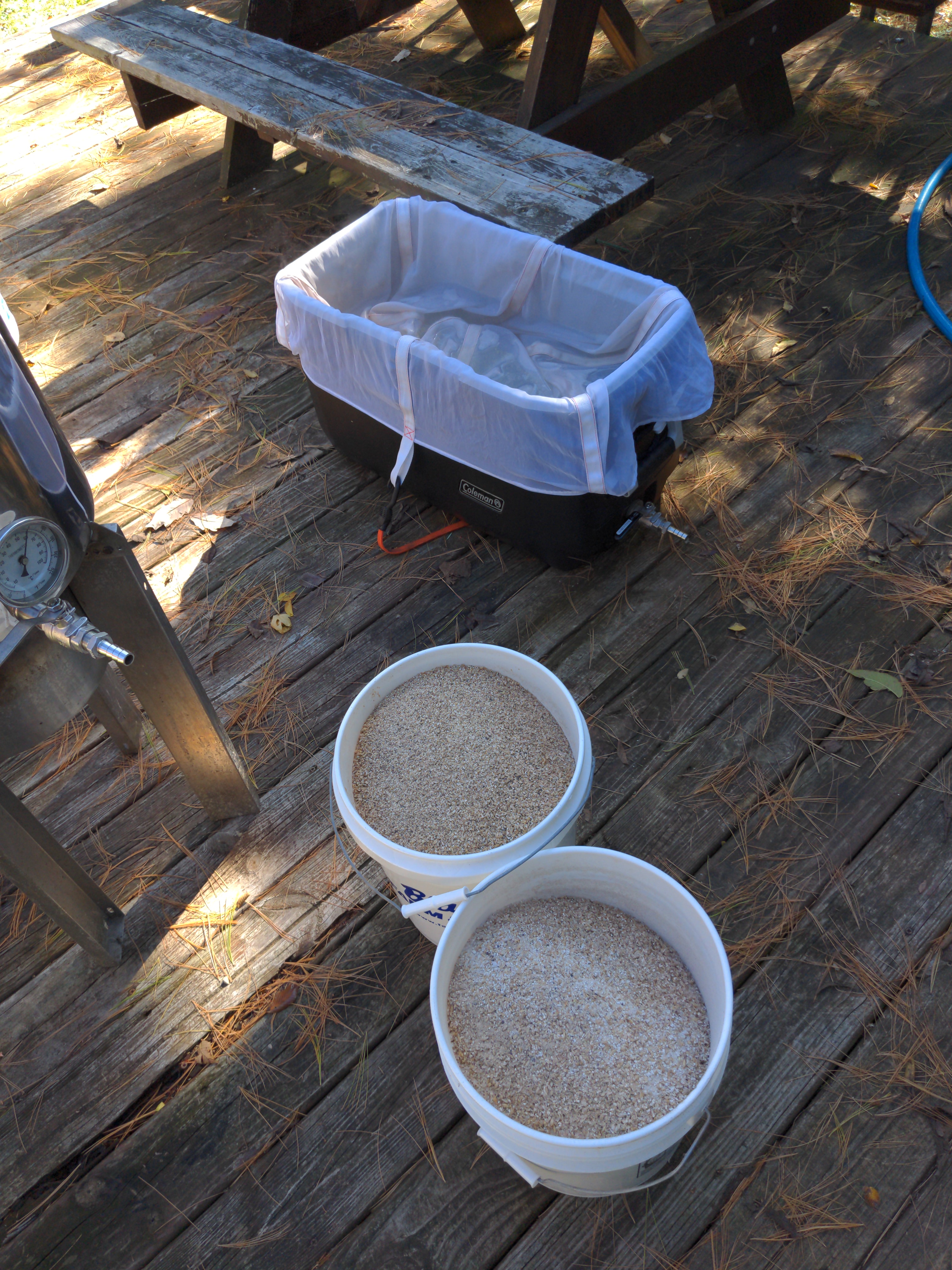
Photo by BUZZ Homebrew Club.
We use hydrometers and refractometers to figure out how much soluble sugar is in the liquid. We can use those numbers to determine what the ABV is.
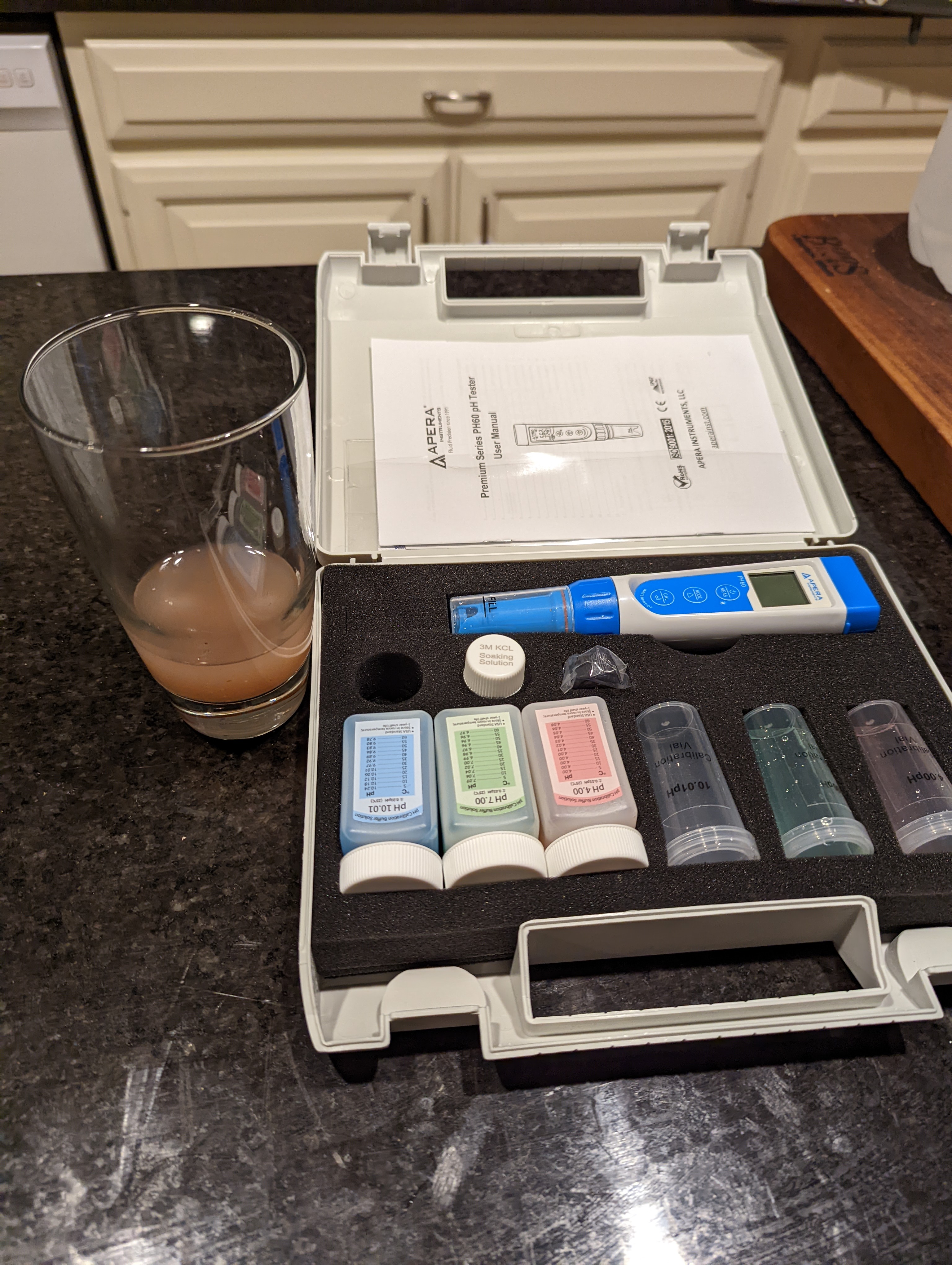
Photo by BUZZ Homebrew Club.
A lot of us have moved on from bottling all our beer to kegging it. Usually we make about five gallons of beer at a time which takes quite a while to bottle. That comes out to roughly 50-55 twelve ounce bottles. Most people who keg also have built a keezer. A keezer is a chest freezer that we have taken the lid off and put a wooden collar where the lid was. Then you put the lid on top of the collar, and you can put tap handles on the collar. So I have three kegs on tap currently on my keezer. It can be a very hands-on hobby, which is another reason I really enjoy the hobby.
SP: It is a cool hobby, for sure. What goals do you have for the club? Or for yourself as a homebrewer?
Murphy: I think the goals of the club are to just get people together of all different backgrounds who share a similar interest. Members can get as much out of the club as they would like. If they just want to show up to meetings every now and again, then that is fine. For myself, I am very excited about the club and want to make sure we can get to as many events as we can.
My goals as a homebrewer are to be able to consistently make excellent beer and be able to explore all different styles and tastes. Like many homebrewers, there is always the fun thought of taking it to the next level and going pro.
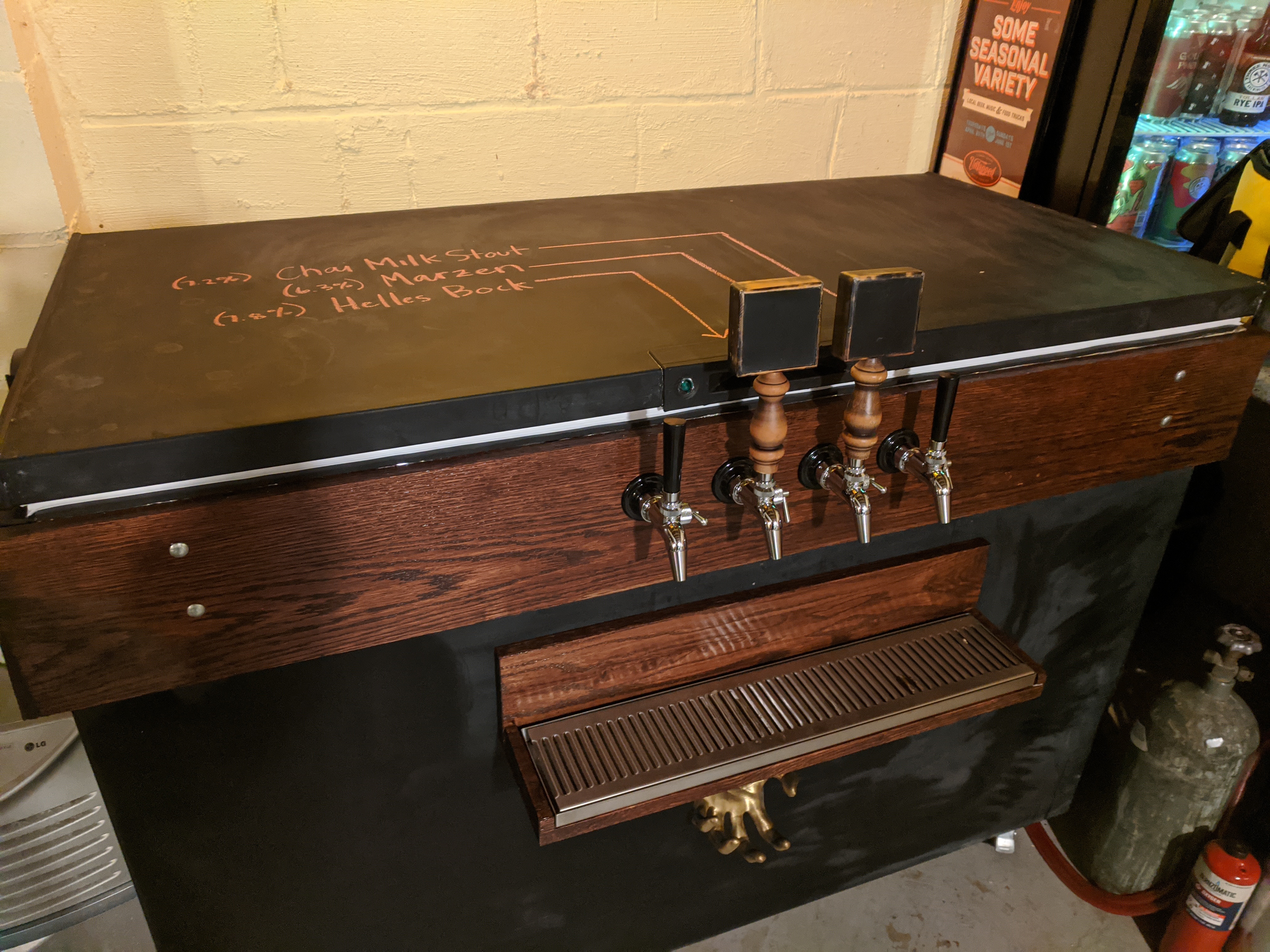
Photo by BUZZ Homebrew Club.
SP: Do you have any favorite memories of the club?
Murphy: From my own experience, I would say going down to Kentucky to get the bourbon barrel was a great memory. I got to know a couple guys from the club more, and we have become friends. Plus, who doesn’t enjoy renting electric scooters while going between bars in Louisville?
SP: Have there ever been any bad beers? Like couldn’t even drink it?
Murphy: Oh, absolutely. I’m sure every brewer — whether homebrewer or pro — has had to dump at least one batch. Sometimes you can grit your teeth and get through it. I once made a really great looking Marzen, or Oktoberfest, beer — but it tasted absolutely terrible. It had a chemical taste and smell to it. I realized I hadn’t rinsed the cleaner out of my keg before I put the beer in. Cleanliness is truly key when making beer. You can make a really great beer, but if unwanted bacteria gets in there, then it can sour — and not always for the better.
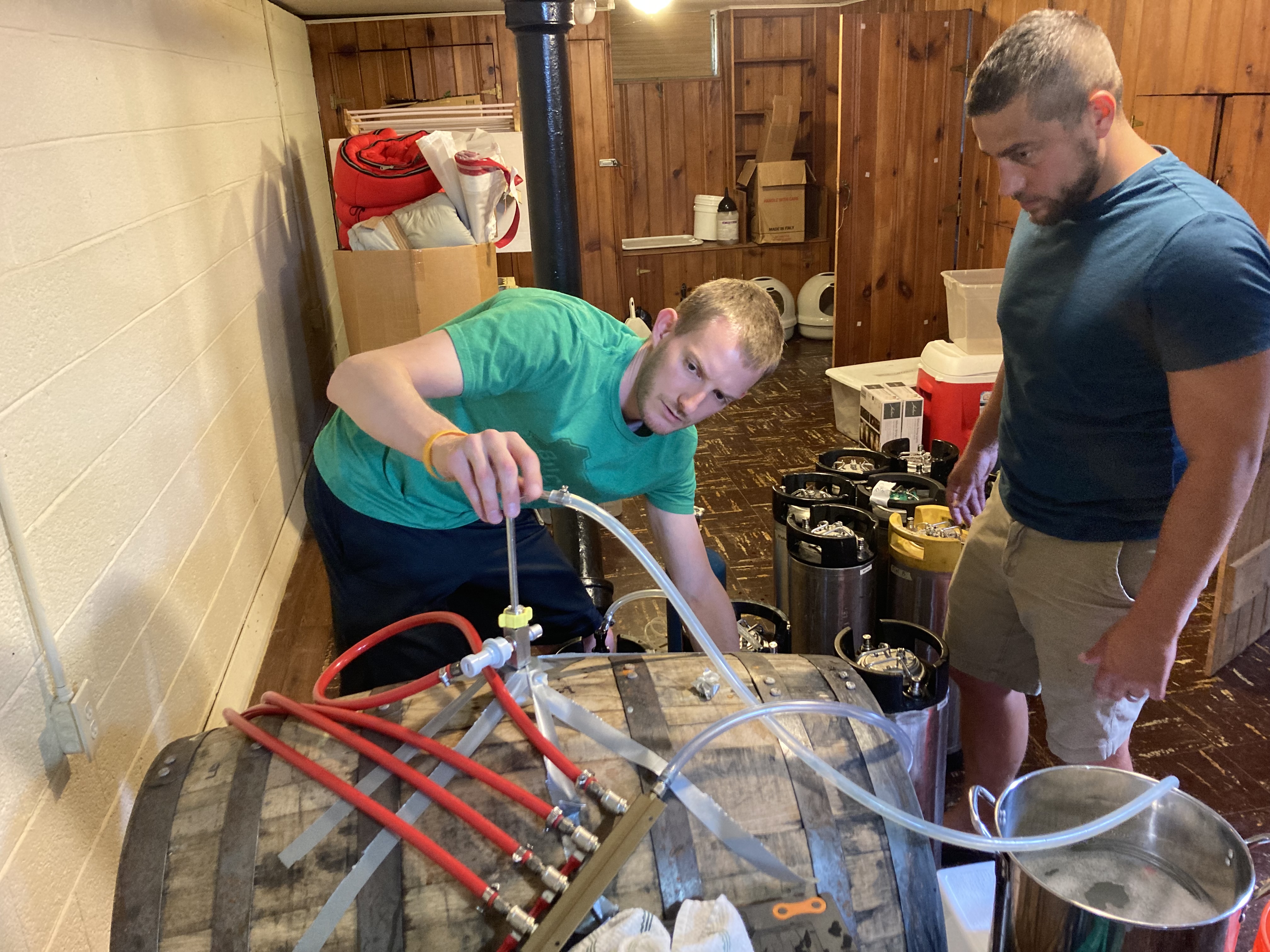
Photo by BUZZ Homebrew Club.
SP: If someone wants to join the club, how does that work? What should they do?
Murphy: They can email us and ask for more details or say they are interested. We can let them know where the next meeting will be, and they can be put on our mailing list. We will also be at the Urbana Farmers’ Market on August 20th and September 24th giving out samples of beer and meeting people.

Photo by BUZZ Homebrew Club.
SP: I’m curious about what beers you like that (maybe) our readers have tried. What are your favorite local beers on tap at restaurants or in the stores?
Murphy: I have recently very much gotten into barrel-aged beers. Triptych has really set the standard for them in my opinion. Their special releases are fantastic, and the regular stouts are also incredible. Of course, Riggs makes a great Hefeweizen, full of banana flavor.
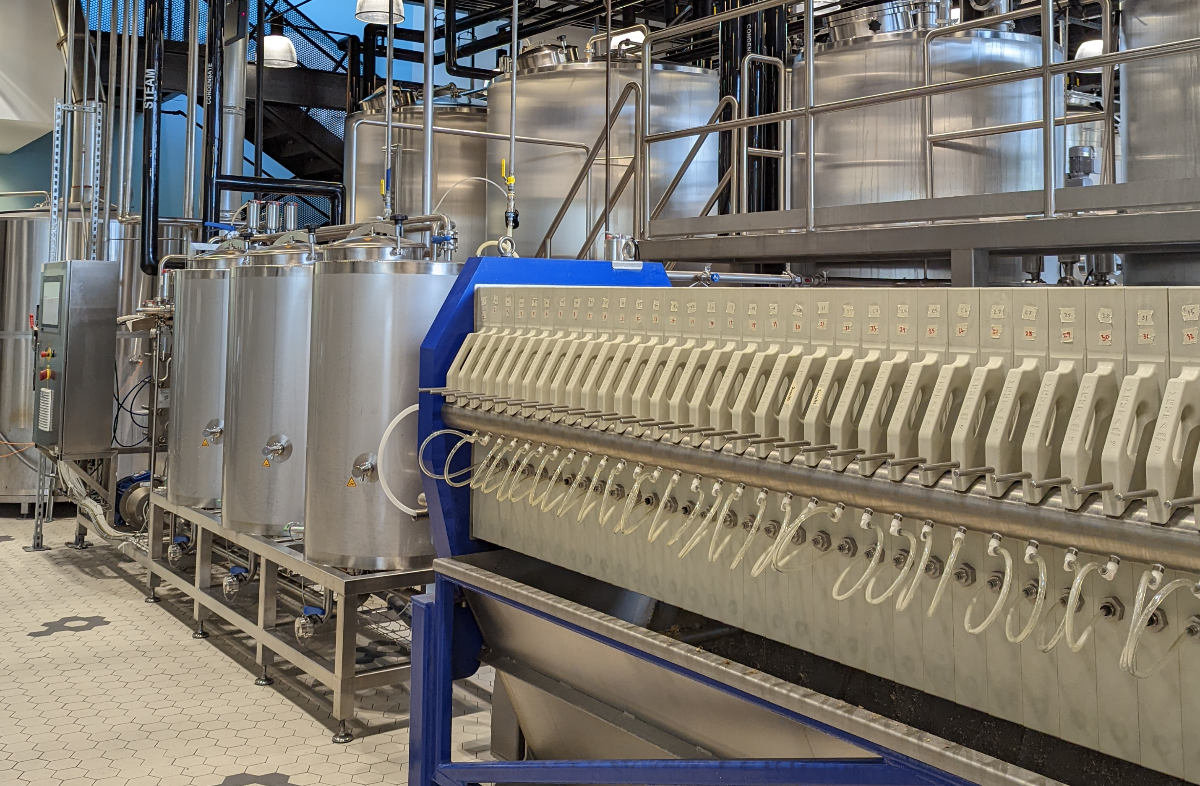
Photo by BUZZ Homebrew Club.
SP: Nice. Do you have favorite restaurants in C-U? Does the club have a favorite meet up somewhere?
Murphy: One of my favorite places was Crane Alley in Urbana, but sadly we all know how that ended up. Some of my other favorites would be Oozu Ramen, Watson’s Shack and Rail, and probably Seven Saints.
The club usually doesn’t meet at restaurants, but we aren’t opposed to that. If we aren’t at someone’s house, then we are usually at a brewery. Normally, we will stick local for meetings, but we have been up to Artesia Brewing in Thawville — which I recommend making the trip to. We’ve also been to Omega Yeast Labs in Chicago to do a tour of their facility.
SP: Anything else you want to share?
Murphy: Yeah, I did want to mention that there have been several people from the club over the years that have gone pro: Anthony of Triptych Brewing, Ryan and Katrina of Artesia Brewing, Lance from Omega Yeast Labs, Corey of Treehive Meadery, John and Steve of Joe’s Brewery (back in the day when it was a brewery), Jeff from Jessup Brewing in Colorado, and Jay, I believe, went to Half Acre Brewing.
